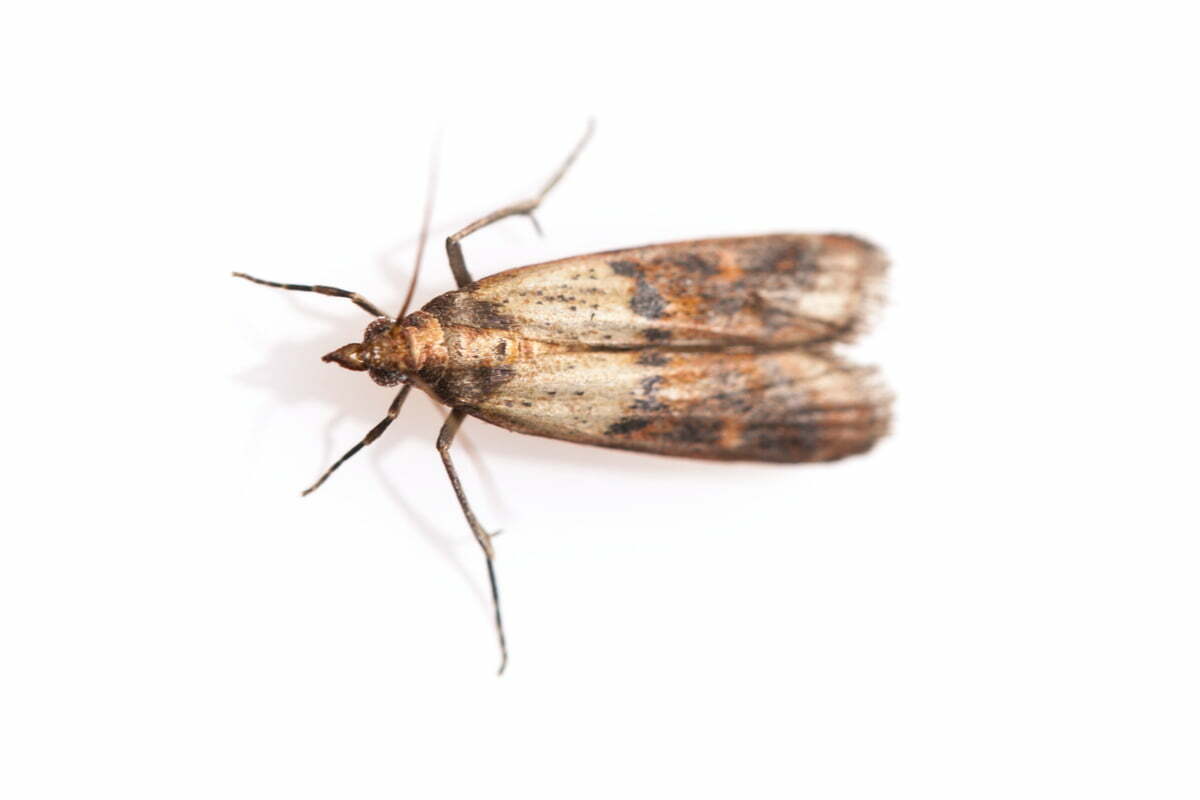Indian Moth
Appearance
This moth is 10 mm in length with a wingspan of about 16 mm. The colors of the forewings go from light gray to light brown on the front third to reddish brown with patterns of dark gray.
Think you might have found this insect in your home?
Talk with an Expert
Life Cycle
The female moth lays up to 400 eggs in just 18 days onto the food source that provide food for the hatching larvae. Complete development to adulthood can take from 6 to 10 weeks. Depending on the quantity of food and environmental conditions, the moth can reproduce up to 6 times per year.
Habitat and Food
Indian moths feed on wheat bran, dried fruits, nuts, seeds, chocolate and powdered milk, as well as sometimes feeding on dried animal and vegetable substances. Indian moths are often found where food is stored.
Undesirable Effects
The larvae of Indian moths cause damage by soiling food with silk strands and sheaths containing their excrement. This moth causes problems of food infestation worldwide.
Signs of Infestation
The poor appearance of food can be caused by Indian moth larvae feces and its webs.
Preparation Steps for a Treatment
- Empty all kitchen cabinets and all drawers, including crockery and food. Place food in the refrigerator and the rest on a table. Make sure you take everything off of the kitchen counter.
- All dry food should be inspected. If signs of infestation are found in certain foods, they must be discarded. Healthy foods should be placed in sealed containers.
- Plan to leave your home for the duration of the treatment and return only after 4 hours. Wherever possible, open windows for 20 minutes upon your return. It is also important to not walk barefoot on treated areas for 48 hours after treatment.